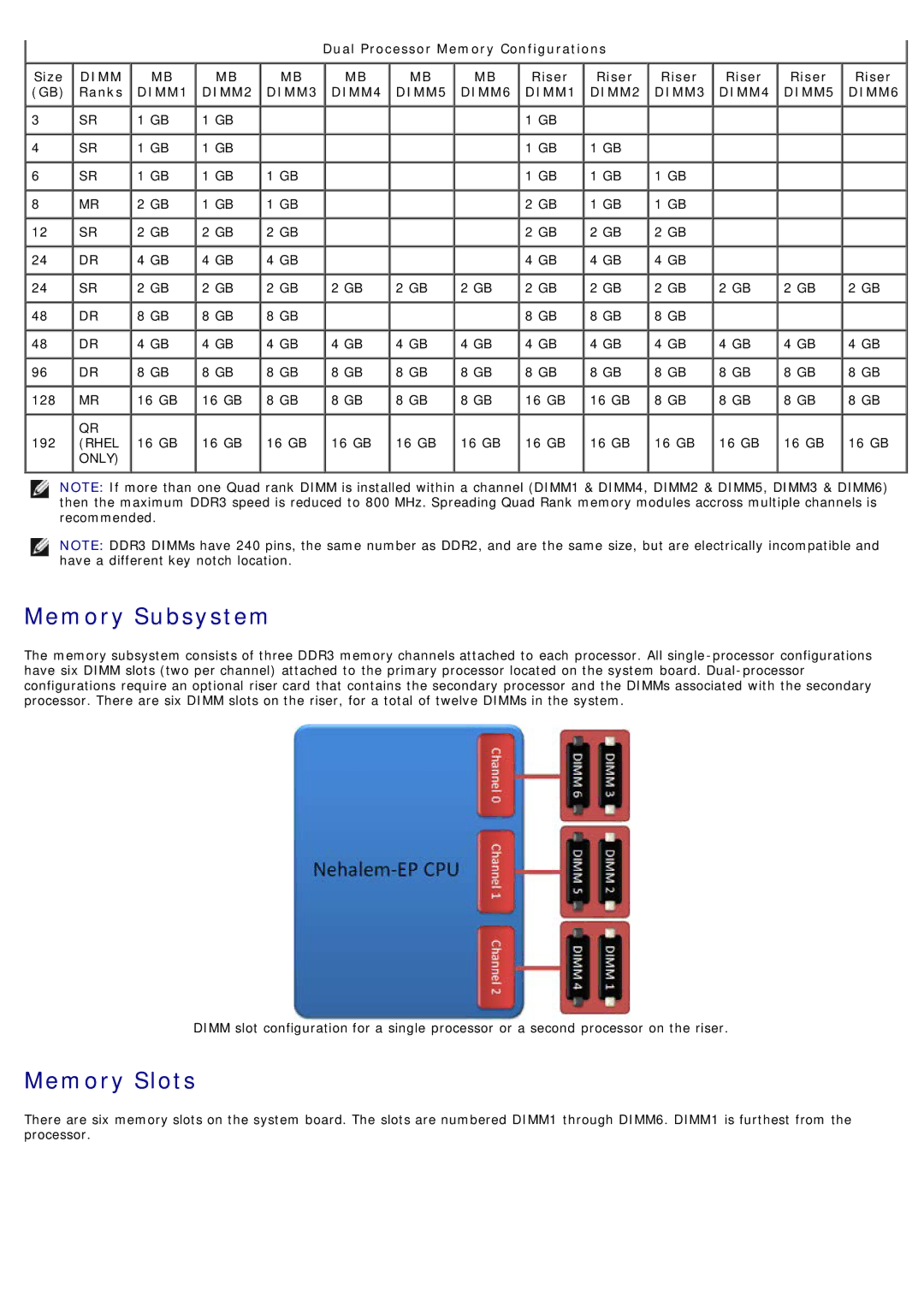
|
|
|
|
| Dual Processor Memory Configurations |
|
|
|
| ||||
Size | DIMM | MB | MB | MB | MB | MB | MB | Riser | Riser | Riser | Riser | Riser | Riser |
(GB) | Ranks | DIMM1 | DIMM2 | DIMM3 | DIMM4 | DIMM5 | DIMM6 | DIMM1 | DIMM2 | DIMM3 | DIMM4 | DIMM5 | DIMM6 |
3 | SR | 1 GB | 1 GB |
|
|
|
| 1 GB |
|
|
|
|
|
4 | SR | 1 GB | 1 GB |
|
|
|
| 1 GB | 1 GB |
|
|
|
|
6 | SR | 1 GB | 1 GB | 1 GB |
|
|
| 1 GB | 1 GB | 1 GB |
|
|
|
8 | MR | 2 GB | 1 GB | 1 GB |
|
|
| 2 GB | 1 GB | 1 GB |
|
|
|
12 | SR | 2 GB | 2 GB | 2 GB |
|
|
| 2 GB | 2 GB | 2 GB |
|
|
|
24 | DR | 4 GB | 4 GB | 4 GB |
|
|
| 4 GB | 4 GB | 4 GB |
|
|
|
24 | SR | 2 GB | 2 GB | 2 GB | 2 GB | 2 GB | 2 GB | 2 GB | 2 GB | 2 GB | 2 GB | 2 GB | 2 GB |
48 | DR | 8 GB | 8 GB | 8 GB |
|
|
| 8 GB | 8 GB | 8 GB |
|
|
|
48 | DR | 4 GB | 4 GB | 4 GB | 4 GB | 4 GB | 4 GB | 4 GB | 4 GB | 4 GB | 4 GB | 4 GB | 4 GB |
96 | DR | 8 GB | 8 GB | 8 GB | 8 GB | 8 GB | 8 GB | 8 GB | 8 GB | 8 GB | 8 GB | 8 GB | 8 GB |
128 | MR | 16 GB | 16 GB | 8 GB | 8 GB | 8 GB | 8 GB | 16 GB | 16 GB | 8 GB | 8 GB | 8 GB | 8 GB |
| QR |
|
|
|
|
|
|
|
|
|
|
|
|
192 | (RHEL | 16 GB | 16 GB | 16 GB | 16 GB | 16 GB | 16 GB | 16 GB | 16 GB | 16 GB | 16 GB | 16 GB | 16 GB |
| ONLY) |
|
|
|
|
|
|
|
|
|
|
|
|
NOTE: If more than one Quad rank DIMM is installed within a channel (DIMM1 & DIMM4, DIMM2 & DIMM5, DIMM3 & DIMM6) then the maximum DDR3 speed is reduced to 800 MHz. Spreading Quad Rank memory modules accross multiple channels is recommended.
NOTE: DDR3 DIMMs have 240 pins, the same number as DDR2, and are the same size, but are electrically incompatible and have a different key notch location.
Memory Subsystem
The memory subsystem consists of three DDR3 memory channels attached to each processor. All
DIMM slot configuration for a single processor or a second processor on the riser.
Memory Slots
There are six memory slots on the system board. The slots are numbered DIMM1 through DIMM6. DIMM1 is furthest from the processor.
